大正期間,臺灣總督府法院有個通譯官叫片岡巖,長年記錄鄉野傳奇彙整而成《臺灣風俗誌》一書,其中,有段故事叫〈潭中的鬼哭〉,內容提到在新店溪的末流,位於名叫槓桿街的河岸,有間古寺叫寶藏巖,為乾隆年間泉州人郭治亨所建;寺廟下方有個石壁潭,岩壁下河水波濤洶湧;郭有一子,名為佛求,為寶藏巖寺中僧人;佛求有一女,九歲那年,死於臺北發生的一場地震,從此以後,鬼魂每夜在石壁潭上哭泣,哭聲迴盪山邊不絕於耳。1
數百年後,石壁潭下的河水不僅不再壯闊還濃稠停滯如同水溝,水面映照的是腳踏車道與花海的愛心型雕塑,古寺邊深邃的叢林則退位給停車場自動販賣機與惡狗;唯獨在東北強風穿過狹路所傳來的鬼哭神嚎,才讓人想起那個載浮載沉的哭泣女童。
2020年春天,我在寶藏巖國際藝術村進行三個月的駐村,在那段期間,我每天早上看著窗外跨越河面像是連結了陰陽兩界的福和橋;在週間,無數網美與登山協會阿伯在我住所前拍照留念;週末,河對面俗稱「賊仔市」的福和市場熱鬧滾滾,從新北市這頭烤香腸的繚繞煙霧中回眺,寶藏巖介於山水之間,像是個橋邊的山寨。
在清代,東有蟾蜍山、西有小觀音、腳下流淌著瑠公圳的公館是個隘口,為貨物前往艋岬前的集散地,繁榮的貿易讓官府在此設立「公館街」(意指官所)以處理漢番交易與佃租事務;小觀音山上,泉州移民搭建廟宇,用閩南話稱其為「巖仔」(意指山邊的寺廟),寶藏巖寺的祭祀者遍及新店溪與景美溪一帶,不僅信徒渡船來此拜佛,文人雅士也在此泛舟吟詩,留下詩句。
日治時期,因此地水質優良,寶藏巖開始有日軍駐紮,並留下至今仍可見的機槍堡;二戰後,撤退來臺的軍民在此搭屋造房,構築成具初期規模的違章聚落;到了1980年代的經濟起飛,來臺北工作的勞動人口在此落腳,寶藏巖人口暴增至兩百戶;從古至今,榮民、本省人、客家人、原住民、移工、學生、外籍新娘,各方天涯流落人在此匯集、融合,塑造了此地既國際又在地的文化景觀。2
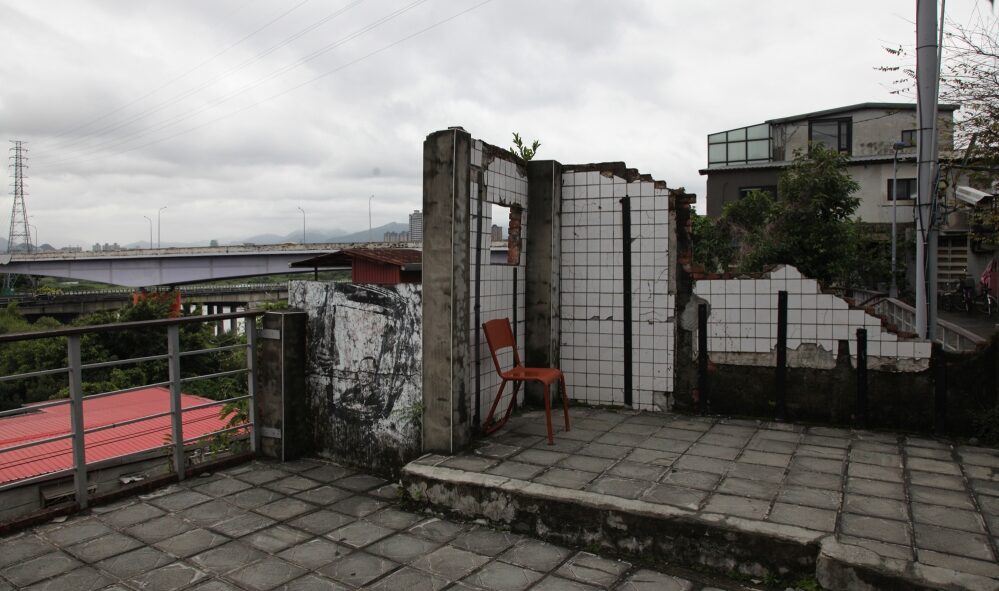 總是吸引網美自拍的半樓廣場。圖/張碩尹攝影
總是吸引網美自拍的半樓廣場。圖/張碩尹攝影
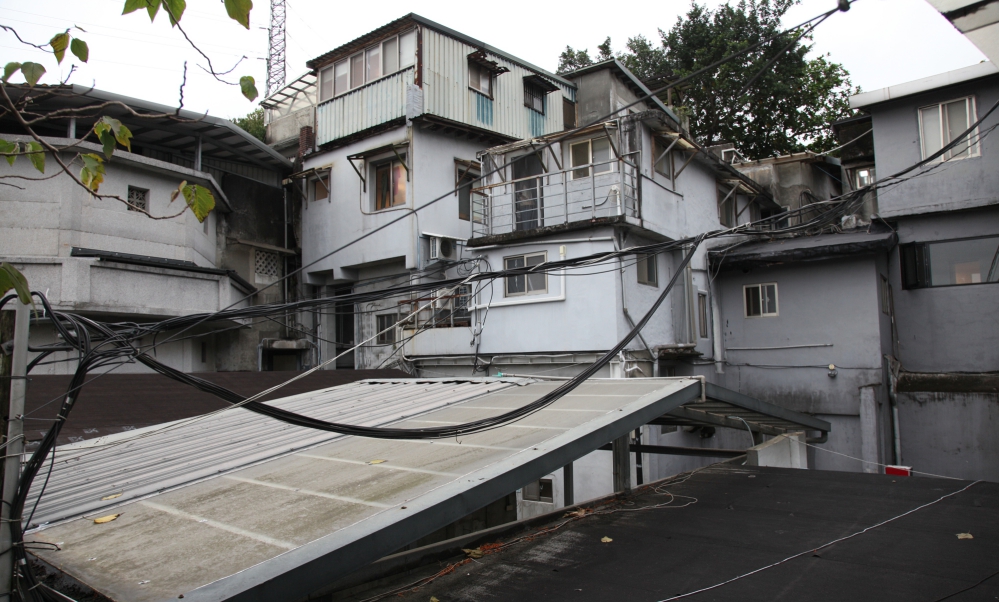 寶藏巖國際藝術村中的藝術家居所與工作室,下方為「十字廣場」。圖/張碩尹攝影
寶藏巖國際藝術村中的藝術家居所與工作室,下方為「十字廣場」。圖/張碩尹攝影
寶藏巖儘管遺世獨立卻如一面鏡子般忠實地反映著山下的世界。它來自一場社會的實驗,其中包含了烏托邦的政治想像與社會理想,並攪和著地方勢力與市政方針,在街頭運動、公權力,與藝術家等多方角力下誕生。
據當地居民說,寶藏巖與政府的孽緣始自李登輝擔任臺北市市長期間,一天市長途經公館,抬頭瞥見盤據山頭的寶藏巖,恥於其貧民窟破敗樣貌心中動起了拆除之念。自此,寶藏巖展開了漫長的家園拉鋸戰;從李登輝規劃公園預定地、黃大洲與陳水扁拆遷不果、馬英九委託專業的都市改革組織(簡稱為OURs)規劃發展、最後2010年郝龍斌強力執行下落成了國際藝術村;耗時幾十年,歷經多任市長,寶藏巖在臺北市都市化路程上跌跌撞撞、坎坎坷坷,成了今日樣貌。
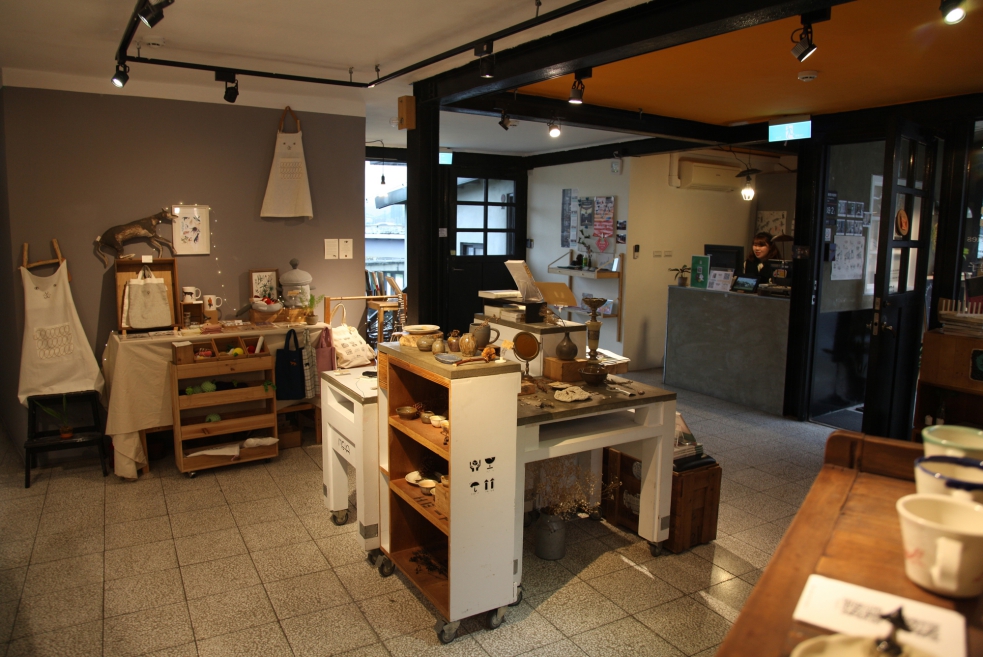 國際青年會所。圖/張碩尹攝影
國際青年會所。圖/張碩尹攝影
現今寶藏巖的營運架構主要分為三個區塊:「寶藏家園」、「國際藝術村」與「國際青年會所」,其為2003年起OURs受臺北市文化局所委託規劃;起自「無殼蝸牛運動」,一路到十四、十五號公園的抗爭,OURs過去街頭運動的軌跡仍可在此看到蛛絲馬跡;在過去,以發展為主導的臺北市府秉持先發補償金隨後強制驅離、左手給糖右手巴掌的拆遷政策,有鑒於此方式往往導致弱勢族群流離失所,「寶藏家園」提出另一條都市發展思維:在不破壞鄰里網絡的前提下,將居民「就地安置」於原有居住地;「國際藝術村」與「國際青年會所」則嘗試將寶藏巖與國際旅客、文化工作者與藝術場景連結,從這個角度來看,寶藏巖成了1990年代起「藝術介入社區」想像之下的樣品屋,藝術家不但是文化生產者,從今以後,也肩負了活化蕭條社群與閒置空間的重責大任。
在駐村期間,我常在曾是葉偉立「小花園」的辦公室前抽煙,盯著曾堆滿奇石而現在雜草叢生的院子發呆,看著現實與記憶交錯在香菸的重重煙霧中。偶爾,山邊傳來的鬼哭像是在提醒世上的活人,這段曲折的現代化路程上臺灣人所共同失去的東西。
作為1980年代出生、1990年代成長的世代,我的童年在臺北南區度過。記憶中的臺北是個永遠處在戰爭狀態的都市,到處都是眷村、廢墟跟軍事基地;兒時的我常常牽著腳踏車沿著和平東路遊走,看著興建中的木柵線,一座座高架橋墩像是復活島的巨石,偶爾信義區陸軍保養廠開出坦克,噪音震耳欲聾,跨過建國南路之後是整片的眷村與違建,對一個本省小孩來說,那以磚塊與鐵皮堆疊而成的社區是個刺激的探險地,裡面到處是蔣公遺志、山東大饅頭與一臉兇惡的老兵。
隨著我年歲的增長,臺北也不斷演變,當我進入青少年期時,眷村被一個個剷平,軍營成了公園,違建成了大廈。
2000年初,大學時期的我踏入了寶藏巖,那渾沌、雜亂與破敗的存在還保存著過去臺北的樣貌。當時的我攀爬在蜿蜒的巷弄,燠熱夏日蚊子衝天,看著居民在雜草與垃圾交雜的廢墟中種菜、晾衣,對於人類驚人的生存能力感到佩服;發著幽冥光芒的靈骨塔後方,幾棟破屋前升起營火,火光照亮著葉偉立的工作室、劉和讓、李國民、吳中煒,與年輕人如臺大社會系的楊子頡、後來成為藝術家的陳泰樺等人,當時,他們將我所觀看的這一切稱之為「寶藏巖公社」。3
寶藏巖公社是個短暫又脆弱的存在,抗爭行動匆促而慘淡地收場。儘管本人不身處公社其中,也未參加佔領行動,至今卻仍記得當時的感覺,那塊地方儘管破爛,卻瀰漫著一股什麼事情都有可能發生的生命力,在那自成一格的開闊性與自由度之中,任何幼稚的行為、未周的思慮都能夠被包容與接受;反觀現在,身處現下政府與產業高度融合的藝文場景,當初那虛無飄渺的無為氣氛,包裝破爛、飄散反體制氣味的地下場景卻已不復存在。
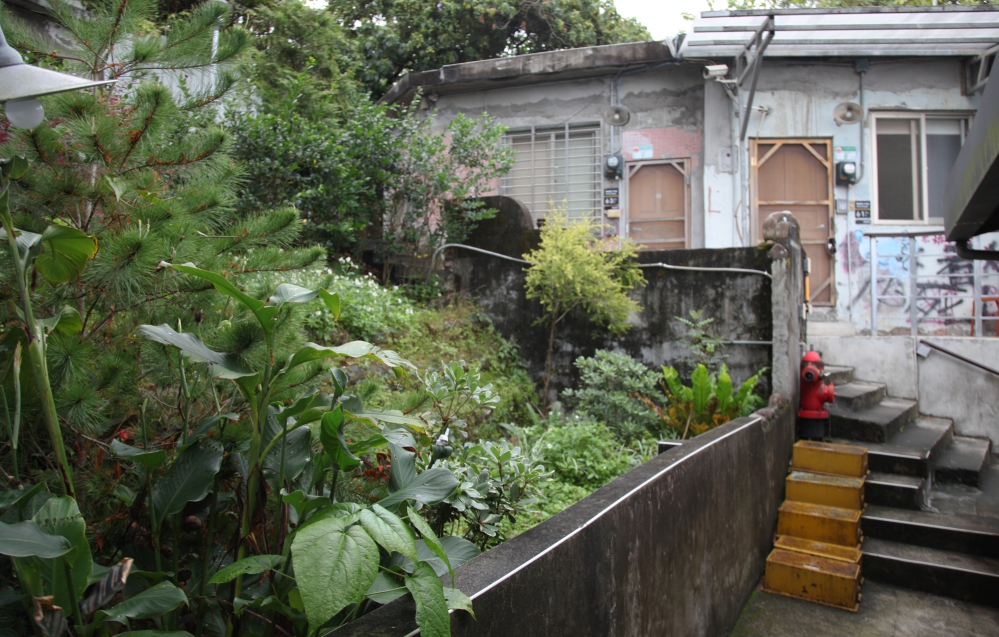
2020年春天,當我再踏上寶藏巖的時候,過去半傾倒的屋舍已被不鏽鋼與木板強化,成為怡人的居住環境;晚上煮飯洗衣用的是臺灣古早的拼花瓷磚,早上開門即是新店溪山水與快速道路交纏的奇景;山邊警衛崗哨日夜執勤、打掃阿姨辛勤工作,整體環境已如同臺北市蛋黃區般一塵不染;長滿植被的水泥牆上茂密的植栽、山腳下居民密集栽培下生機蓬勃的菜園;坐在山城上的兩個咖啡廳「秋紅」與「尖蚪」中,讓人忘記了臺北城的喧囂與嘈雜。
自開村來十多年時光,山城已成為藝文場景中的一塊版圖,除每年舉行的寶藏巖光節、大小表演、藝術展覽在此發生外,也有回應此地特殊歷史的佳作,如2017年許峰瑞所策之「歲月違章――寶藏巖歷史重述展」,其以策展方式重新拆解過去,揉合出寶藏巖的時間、事件、記憶與生活的光譜。
寶藏巖國際藝術村每年徵選國際藝術家來此發展作品,相較於現下盛行以徵件主題主導藝術家創作走向的「策展式駐村」,總監李曉雯則強調國際藝術村的開放性,在不限定概念與形式的條件下,提供藝術家在此自由工作的特殊時空。
除短期駐村外,寶藏巖另有提供長期進駐的「微型聚落」,最久可達九年,進駐單位包括「差事劇團」、插畫工作室「三貓俱樂部」、利用電子廢料創作的「Kjohn的再生軍團」、從事暗房與攝影教學的「Mechanman Lab」等;整體來說,「微型聚落」不若短期駐村當代藝術氣息濃厚,而偏向社區藝術與文創、舉辦串連活動,保持開放的「微型聚落」也讓寶藏巖有了另一層的「親民性」,每到週末,為數眾多的民眾在多個工作室間串門子,讓人勾起過去鄉間的鄰里情懷;相較於短期駐村的「過客」,長期進駐者也與居民發展出深厚感情與合作關係,如從開村至今與居民共創生態農園的藝術家周靈芝。
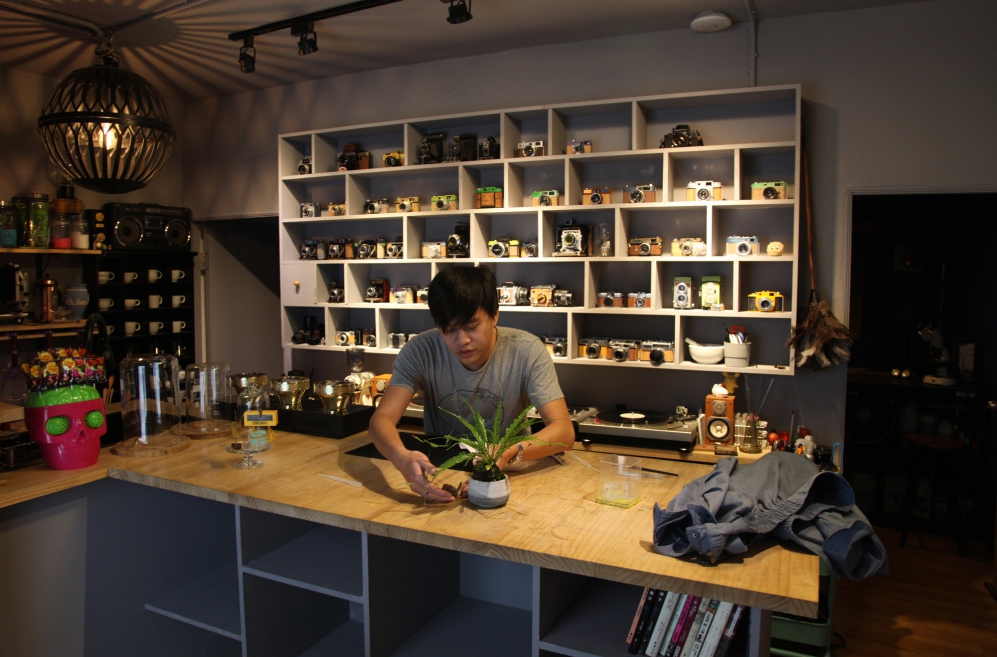 寶藏巖「微型聚落」中,從事暗房與攝影教學的「Mechanman Lab」。圖/張碩尹攝影
寶藏巖「微型聚落」中,從事暗房與攝影教學的「Mechanman Lab」。圖/張碩尹攝影
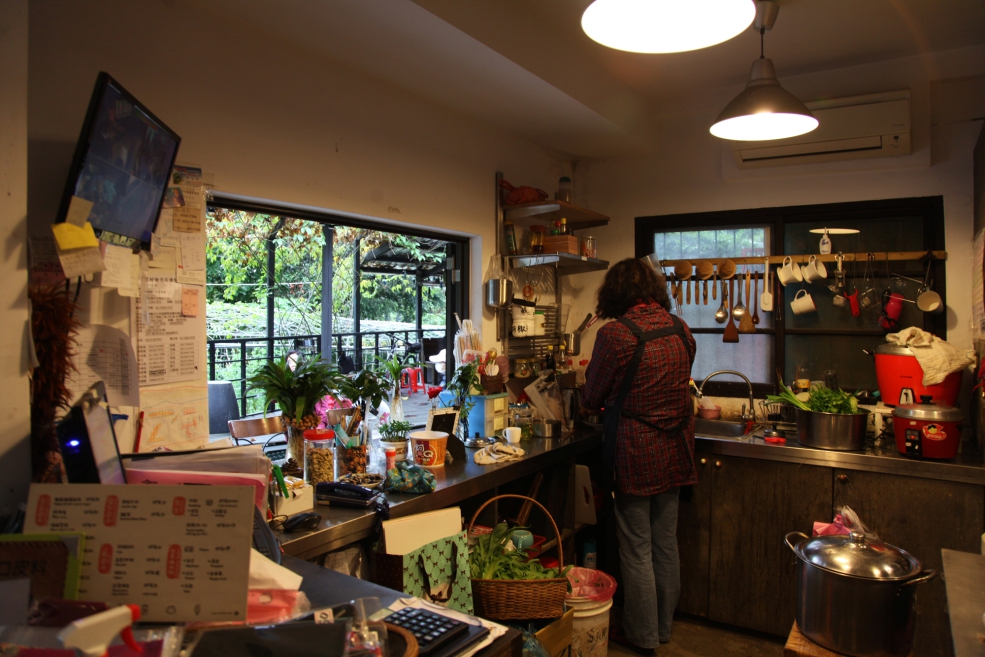 寶村柑仔店。圖/張碩尹攝影
寶村柑仔店。圖/張碩尹攝影
在硬體設備上,寶藏巖除了木工工作室之外,並無寬敞空間與專業機臺供創作者使用,山城地勢又限制了大型作品的進出與材料搬運,讓在這邊發生的計畫有了材質與物理空間的限制;由民宅修改、格局破碎的展演空間,對善於回應場地的藝術家是有趣的挑戰;對於習慣於超高解析度影像與美術館規格的藝術家來說,此地的影音配備則會讓人掉淚;辦公室裡的骨幹是小編制的行政與實習生,儘管年紀偏輕偶有經驗不足的情況,整體來說還是個有熱情、在有限資源下賣力完成工作的團隊,這樣環境雖然稍顯克難,很多時候還比在組織龐雜、通訊混亂的大型單位裡瞎子摸象強得多。
寶藏巖因其特殊屬性也面臨許多經營上的挑戰,狹窄巷弄增加展覽調配的困難度;潮濕漏水的房舍不僅難以維修還增加器材損壞率;蚊蟲飛舞、極端氣候條件導致遊客數量不穩;無法在各大網站提供網路訂位的「國際青年會所」則面臨住客率的低落。經過了多個年頭,「寶藏家園」的住戶也日漸凋零,在「寶村柑仔店」旁的棚子下總是坐著幾個聊天抬槓的阿伯與阿姨,在他們眼中,這個藝術家職場生涯短暫停留的山城,卻是婚喪喜慶、生老病死,世世代代在此刻劃生命的土地。他們的言談間,也透露著對未來的焦慮,眼看與市政府的12年居住合約將在明年到期,原住戶的去留與新住戶的到來,都將為社區帶來不確定因素。
源自於社會正義與文化參與的精神,寶藏巖是政治理想與藝術想像所創造出來的烏托邦,它抗拒都市化的侵蝕、經由眾人努力被保留下來,成為了臺灣人在現代化路程所遺留下的共同記憶,但同時,就如同許多散佈在臺北都會角落的歷史建物,它是一張被數位修復的老照片,在高解析度與彩度下細節盡失,成為對抗過去的「非記憶」。作為一個歷史聚落,寶藏巖缺乏對於過去的系統性整理,旅客在此走馬看花,到此一遊,卻往往不知所以;作為一個藝文單位,寶藏巖卡在美術館、替代空間與文化園區之間,不上不下,角色模糊,但也因為它的不確定性,提供了文化工作者相較自由的創作環境。寶藏巖的複雜存在讓經營者左支右絀,但它就如同臺灣社會的縮影,在大時代下連滾帶爬,卻在多舛的命運下保持堅韌的身段。
在駐村結束的那天,我提著行李最後一次眺望這個福和橋邊的山寨,似乎石壁潭邊傳來一道道無聲鬼哭,述說著已經沒有人聽到的古老故事,然後穿過重度污染的河水,在霾害嚴重的臺北天空消失不見。